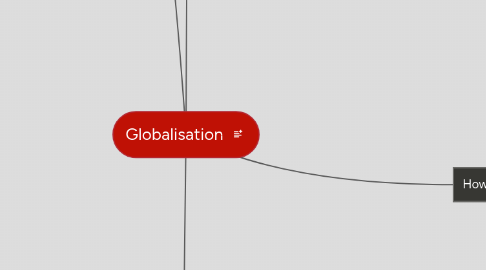
1. Impacts of TNC's
1.1. McDonalds
1.1.1. Re branding products (i.e. Maharajah jaburger in India, as beef is socially unacceptable to eat)
1.1.2. Pricing reflects power purchase parity in the area
1.1.3. Uses local products, promotes micro businesses around McDonalds
1.2. Fila Ltd.
1.2.1. 5250 people employed, of which 80% are women
1.2.2. $0.42/hour, low wages, as well as compulsory overtime shifts
1.2.3. Cases of respiratory problems and injuries recorded
1.3. Nike
1.3.1. 35000 jobs were created when Nike located in Vietnam
1.3.2. Workers are underpaid and operate in MEDC substandard conditions
1.4. Coca-cola
1.4.1. Inefficient production systems cause the lowering of some villages in India's water supply
1.4.2. In El Salvador, child labour is common for sugar cane harvesting
1.4.3. Creates a positive multiplier effect
1.4.4. In Colombia, the paramilitary group Black Eagles murdered 9 Coca-cola unionists. The company has done nothing
1.5. Peugot/Citroen
1.5.1. French TNC that operated 25 plants closed one down near Royton, Coventry in 2006 for relocation in central Europe
1.5.2. 2300 job losses, extending to 10000 job losses in multiplier effect
1.5.3. Negative impact to the service industry due to low income citizens
2. Trade
2.1. Issues of trade
2.1.1. LEDCs don't tend to receive most of the benefits
2.1.2. LEDCs receive loans in which they cannot pay it back
2.1.3. MEDCs subsidises farmers which undercut LEDC farmers due to their cheap goods
2.1.4. LEDCs tend to rely on one commodity which can be problematic: i.e. Drought decrease crop yield for the year
2.2. Trade patterns
2.2.1. UK
2.2.1.1. Increased trade value due to free trade and globalisation
2.2.1.2. Trade deficit in merchandise, surplus in services
2.2.1.3. 60% trade with the EU, imports a lot of agriculture products
2.2.2. Bolivia
2.2.2.1. Exports gas, Zn, Sn, Au, copper and wood,
2.2.2.2. Imports manufactured goods
2.2.2.3. Trading partners with Brazil and USA under the Trade promotion and drug eradication act
2.2.3. Brazil
2.2.3.1. 75%/65% exports/imports with Americas and Europe
2.2.3.2. Part of MERCOSUR
2.2.3.3. Exports manufacturing and agricultural products
3. How is it measured?
3.1. Foreign Direct Investments
3.1.1. China's FDI to Africa
3.1.1.1. Advantages
3.1.1.1.1. Coasta access via railway
3.1.1.1.2. Jobs created
3.1.1.1.3. Both recipient and donor country receive benefits
3.1.1.2. Disadvantages
3.1.1.2.1. Economic leakage in Angola due to the Chinese workers
3.1.1.2.2. Ivory chopsticks demand encourage illegal ivory trade
3.1.1.2.3. Exploitation of Angola's resources
3.1.1.2.4. Chinese out compete African sellers in their own markets
3.1.2. China, Guandong Province
3.1.2.1. Advantages
3.1.2.1.1. Massive economic growth due to movement to a market based economy, economic liberalisation, and set up of free trade zones
3.1.2.1.2. Guandong is close to the coast with a huge work force, TNC base and a government that encourages FDI's
3.1.2.2. Disadvantages
3.1.2.2.1. Rapid urban growth resulting in a strain in services such as waste: Pollution and acid rain levels increase, industrial waste increases
3.1.2.2.2. Pearl river is biologically dead, affects farmers due to contaminated water affecting crops and livestock
3.1.2.2.3. Creates a job deficit in the rural areas due to Guandong's pull factors
3.2. KOF index
3.3. Cultural integration
3.4. Internet users/VOIP calls
3.5. Political agreements
3.5.1. EU Schengen agreement lets other Europeans to work in the UK without a work permit
4. Development through
4.1. Improved communications
4.2. Cheap labour
4.2.1. Globalisation has benefited Taiwan: 30 years ago, there as widespread malnutrition as well as having no resources
4.2.2. Success of Taiwan is mainly due to the high-tech firm Acer, as well as sweatshops, which means that income is more steady, children stay in schools and micro businesses exist

